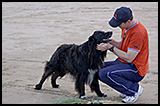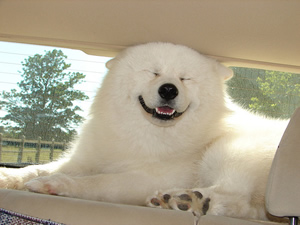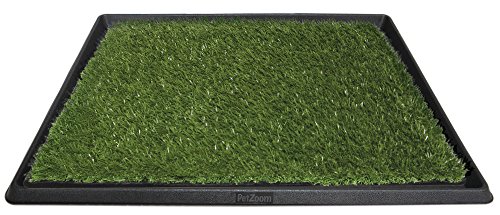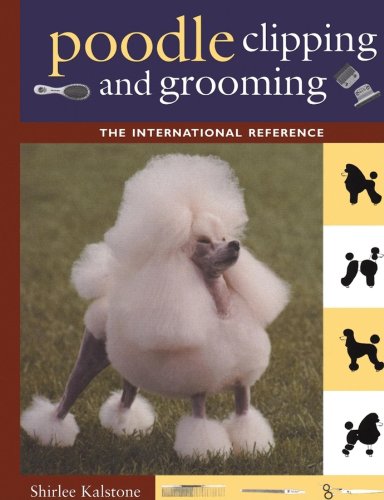A lot of effort, worry and plain hard graft can be prevented by, conditioning a puppy for an obedient future. A puppy can enjoy the early part of his life and may well enjoy it more if he is given the opportunity to follow and respect his 'pack leader' - that is, you, the handler. A puppy should experience authority, fairness and also the great excitement of life. All these can be experienced in preparing him for a happy and faithful future.
Initial training of any puppy must be based on two requirements: his respect for you, which can only be based on his happy desire to please you and the prevention of bad habits. He should give his immediate attention to you, no matter what he is doing, when commanded. He must also be prepared to come to you when called and he should learn the need for a prompt response to this request. It should be noted that commands are used to obtain immediate attention and requests are used to achieve something positive and active. A request does not mean that you accept refusal or allow time to think about it. It means that your tone of voice is that of a request, with your actions that of urgency and excitement.
An example of this approach to dog training is getting a puppy to come when called. There should never be a need to teach a puppy to come in the formal sense of expression. He should be conditioned to want to be with you when he is called with the sole objective of an immediate response. This can be best achieved if the puppy has a genuine desire to be with you and if there is something to come back for, something much more interesting than the thought taking his attention when called. The best way to condition a very young puppy initially is just give him a light flick or tap on the hindquarters with a finger when he is going away from you - this, of course, is whilst he is under no control and free to do what he wants. When giving him this flick, call his name and he will turn his head to see what is wanted. Then, make a great thing of him coming back and let him know he is really wanted. He must feel that it is good to be with you or something great is going to happen.
This approach can be built upon by eventually allowing a little more distance between yourself and your dog. At this stage do not call him when his attention is elsewhere focused, do not create a clash of desires until he is fully responsive to your call. At no time do you move towards your dog once you have called him; if anything move away and draw him in with plenty of excitement and encouragement.
Commands, with a stern tone of voice, are used to stop him from doing something and should be of the severity required to achieve the objective. The command may only be to get his attention so that the recall request can be given. The command, however, should not be given until you are in a position to enforce it, or from past experience are guaranteed an immediate response. The 'in my own time' attitude at this stage is out of the question. In general, the 'command' needs only to be the use of the dog's name.
Although the correct approach to the conditioning and upbringing of a puppy is most important, it does not mean to say that all is lost if a young or adult dog has not had the benefit of this training in life. It may well mean a lot more hard work on the part of the handler to retrieve the situation. It is much easier to be patient with a puppy than with a young dog or adult, especially if by then you are correcting your earlier failings, as there is a strong tendency to blame the dog for the faults that have developed in early training or the lack thereof. Shortcuts in training must not be confused with efficient training. Efficient training may appear to be the long way round, but it is built on a solid foundation with sound long-lasting results and this approach is usually quicker in the long run.

 Basic Learning Theory and Dogs
Basic Learning Theory and Dogs
Basic Learning Theory and Dogs
Basic Learning Theory and Dogs
 Adventures with Your Dog: 23 Ways To Spend Quality Time With Your Pooch!
23 Great Adventures With Your Dog
Its important to spend
Adventures with Your Dog: 23 Ways To Spend Quality Time With Your Pooch!
23 Great Adventures With Your Dog
Its important to spend
 Best Dog Breeds For Children
The best way to have a family friendly dog is to love i
Best Dog Breeds For Children
The best way to have a family friendly dog is to love i
 Is a Standard Poodle the Right Dog for You?
So youve decided to add a do
Is a Standard Poodle the Right Dog for You?
So youve decided to add a do
 How To Treat Ticks On Dogs
About TicksKnowing about tic
How To Treat Ticks On Dogs
About TicksKnowing about tic